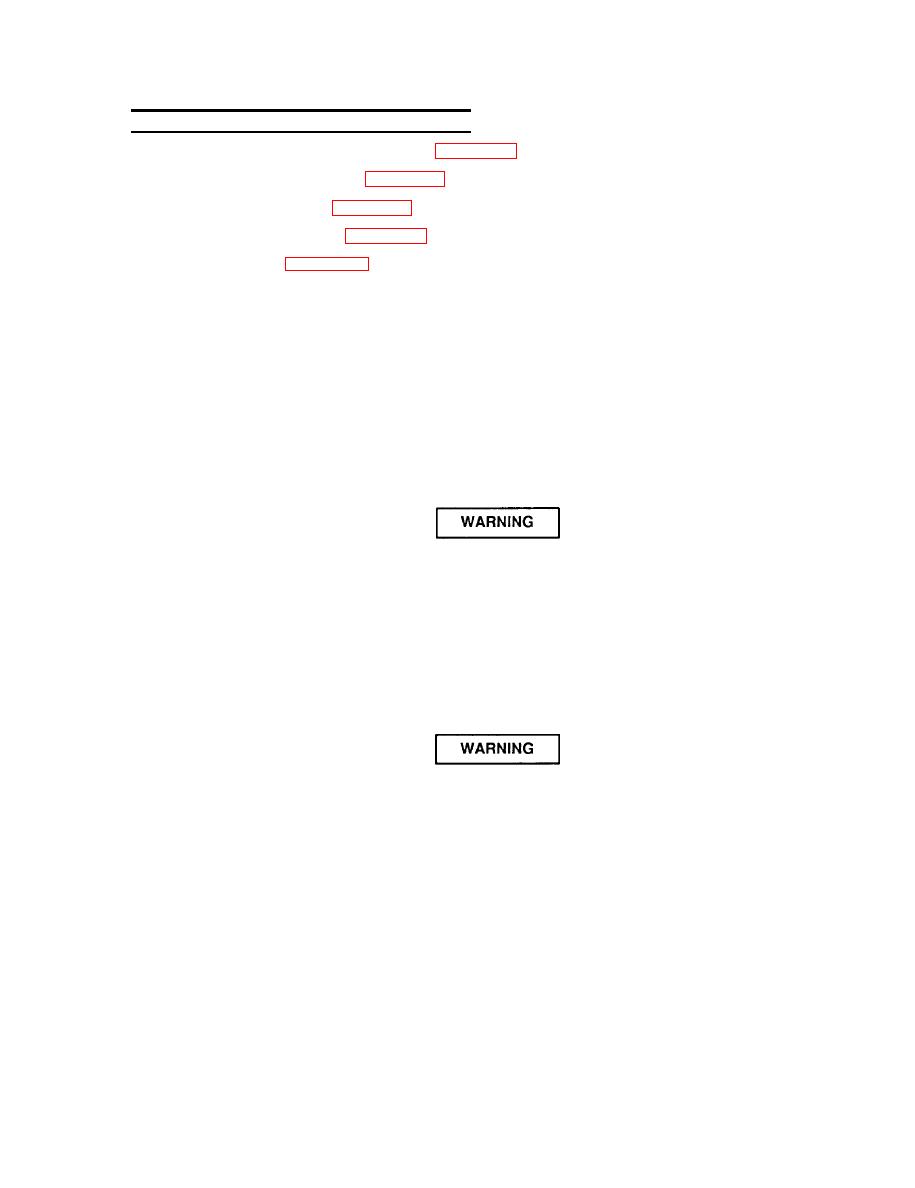
TM 9-4120-371-14
Supplies: Brazing alloy (silver) (items 5 and 6, Appendix E)
Nitrogen cylinder (item 4, Appendix E)
Brazing flux (item 7, Appendix E)
Abrasive cloth (item 8, Appendix E)
Rags (item 9, Appendix E)
a. General. All tubing in the refrigeration system is seamless copper with a bright internal finish that permits
thorough cleaning and prevents entrapment of moisture or other impurities. Rigid grade copper is used for
straight sections and soft grade for sections that must be bent. All interconnecting fittings, such as elbows, tees,
etc., are also copper. The bodies of all valves and all connections on other components are brass. All joints,
except those provided with fIare fittings, are madeby brazing in accordance with MILB7883, except that
radiographic examination is not required.
b. Filler Alloy. Grade IV or VI brazing alloy and Type B flux, as specified in MILB7883, must be used for
all copper to brass joints. Grade Ill brazing alloy may be substituted for Grade IV or VI for copper to copper
joints; flux is not required for copper to copper joints.
c. Debrazing. Debraze joints for removal of refrigeration system components as follows:
All refrigerant22 must be discharged from the system and the entire system must be
purged with dry nitrogen before beginning any debrazing operation.
(1) Determine which joints are to be debrazed. Due to the limited work space inside the air conditioner, it
may be more convenient to remove a part of the interconnecting tubing with the component rather than
debrazing the joints on the component itself.
(2) Before debrazing a joint on a valve, disassemble the valve to the extent possible, then wrap all but
the joint with a wet rag to act as a heat sink.
The polyurethane foam used as insulation in the air conditioner will break down to form
toxic gases if exposed to the flame of a torch at brazing temperature.
(3) Protect insulation, wiring harnesses, cabinet, and other surrounding components with appropriate
shields.
(4) Be sure the work area is well ventilated and that dry nitrogen is flowing through the refrigeration
system at a rate of less than 1 2 cfm (0.0280.057 m3/minute).
(5) Apply sufficient heat uniformly around the joint to quickly melt the filler alloy. If heat is applied slowly,
or only on one side, the entire component or length of tubing will be heated and filler alloy in adjacent joints
may also be melted. Remove heat as soon as the joint separates.
d. Cleaning debrazed joints. All filler alloy must be cleaned from debrazed joints before reassembly. Heat
each piece of the joint until the filler alloy is melted and then wipe it away with a damp cloth.
Be sure no filler alloy or other debris are left inside any tubing, fitting, or component.

